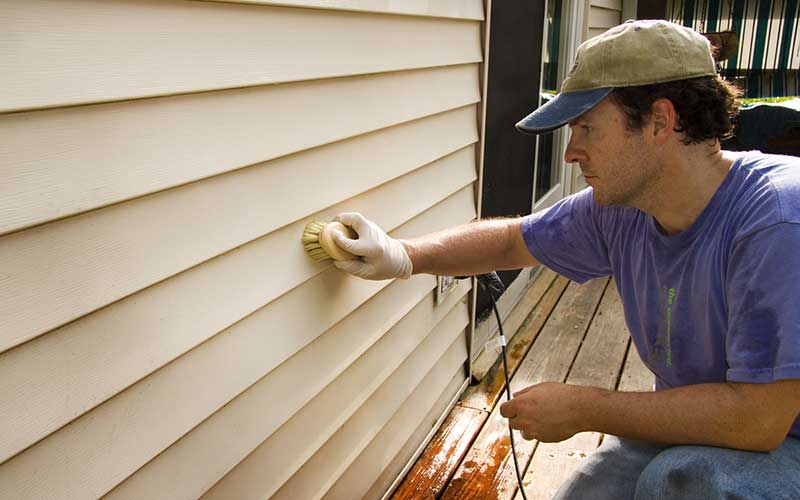
The vinyl siding market is booming, capturing about a third of the market for siding of new homes. But for some, this is controversial growth. Many homeowners, siding producers and construction companies are polarized on the subject of vinyl siding. There is a lot of information and misinformation about vinyl siding on the Internet. Learn about the history of vinyl siding and the benefits of using it.
History of vinyl siding
Most homes in America traditionally use wood siding. Vinyl siding came on the scene in the late 1950s. Initially it was a substitute for aluminum siding, then became the major alternative to traditional wood siding. However, these early versions of vinyl siding are one of the major reasons for its poor reputation today. These early materials would bleach in the sunlight. It would buckle, crack, and sag in the heat. Recovering from these shortcomings has been a long process. However, today vinyl siding has dramatically improved its performance and has gained acceptance from both homeowners and contractors in recent years.
The science behind vinyl siding
Vinyl siding starts out its life as vinyl polychloride resin, which results from the chemical reaction of ethylene, chlorine gas and oxygen. When combined with additives, vinyl polychloride resin creates the wide array of vinyl products we use, from hard vinyl pipes for plumbing to supple faux leather for furniture. Most vinyl siding has a core of recycled—you guessed it—vinyl with a new “virgin” layer of vinyl on top. This layer is specially treated to prevent fading from UV rays and minimize expansion when exposed to heat. Some vinyl companies offer 100% virgin vinyl siding, although it costs more than siding made with recycled materials. Although most vinyl siding is extruded through a die, molds are often used for elaborate patterning and sharper edges.
Why choose vinyl siding
The major benefits of vinyl siding include its lower cost and lifespan when compared to cedar or aluminum siding. Here are some more benefits of vinyl siding in detail.
- Enhances curb appeal: With all the colors available to homeowners, vinyl siding looks beautiful. It does not peel, flake, fade or show scratches.
- Cost per foot: Depending on the type you purchase (recycled vs. virgin, die vs. mold) the cost of vinyl siding is less expensive than or equal to standard cedar siding.
- Easy to install: Here is where vinyl really shines. Fast, simple installation and no need to paint, stain or seal.
- Low Maintenance: Vinyl comes dyed to its core, which means there’s no need to paint it during its lifespan. All vinyl siding may need for maintenance is periodic washing.
- Durability: Modern vinyl is durable and capable of withstanding high winds when installed properly. Many brands carry guarantees for the lifetime of their product. Vinyl does not dent and “bounces back” from impacts such as backyard ball playing. Unless exposed to extreme temperatures, vinyl siding does not crack, sag, warp or peel.
- Sustainably: Vinyl siding is 100% recyclable. Scrap vinyl can be made into another batch of siding or many other vinyl products.
- Energy Efficiency: When properly insulated and installed, vinyl siding provides an insulating layer that reduces air leakage and saves you money on your energy bills.
When building a new home or replacing the siding of an existing home, picking the right siding is a big step. Not only does siding protect your home from wind, rain, and debris, but it also defines your house’s appearance. Contact us to get help on picking the right vinyl siding for your home.
